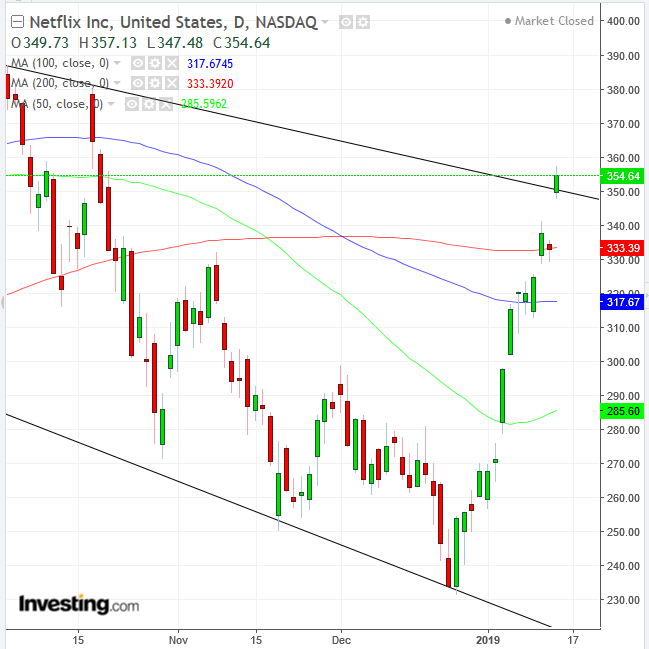Shares of Netflix (NASDAQ:NFLX) jumped yesterday, gaining over 5 percent immediately after Tuesday’s open, subsequent to the company announcing its biggest ever price increase for U.S. subscribers. By the closing bell the advance extended to 6.52 percent.
This brings the streaming entertainment giant's January boost to a total 32.50 percent so far. During this same time the stock endured just a single decline, on Monday. Even more jaw-dropping, over the course of its post-Christmas rally—which hasn't yet ebbed–the stock has risen a mind-boggling 51.76%.
While this market affirmation sounds like good news for shareholders hoping for sustained revenue growth, it's not clear whether it will, in fact, boost sales in the long-term. What will the company's revenue look like if customers cancel their accounts in droves?
Netflix bulls are betting that customers will accept the hikes. It seems to them only fair considering the unprecedented pace of original content and very high ratings the company's programming enjoys. As well, they may point out, the entertainment company managed to increase its subscriber base even amid multiple previous hikes.
On the other hand, angry subscribers took to social media to complain about the price increase. But even with a fully dedicated Twitter hashtag, #boycottnetflix, it's not clear whether the stock will actually suffer. And right now, technical signals would indicate the stock's short-term trajectory could be higher.

Yesterday's announcement pushed prices above the stock’s downtrend line since June 21, when it hit its $423.21 all-time high, after leaping over the 200 DMA in the same move—both bullish signals.
Having said that, the overall trend is still down, at least until a series of rising peaks and troughs emerge. When both buyers—represented by the troughs, and sellers—characterized by the peaks, agree that prices should rise, it means the asset has undergone a structural shift.
Of course, that takes time, at least until traders make up their minds regarding whether the company will be able to increase profits with higher prices, or disappoint investors if the move boomerangs, driving widespread customer desertion.
Trading Strategies
Conservative traders would wait for the price to fall back below the 200 DMA in order to short the stock, or if the series of peaks and troughs ascend, in order to purchase shares.
Moderate traders may short the stock if it falls back below the downtrend line.
Aggressive traders may go long should prices remain above the downtrend line; they'd go short should prices close beneath it.
Trade Sample – Long Position Setup
- Entry: $350
- Stop-loss: $347, below yesterday’s low
- Risk: $3
- Target: $359
- Reward: $9
- Risk-Reward Ratio: 1:3
